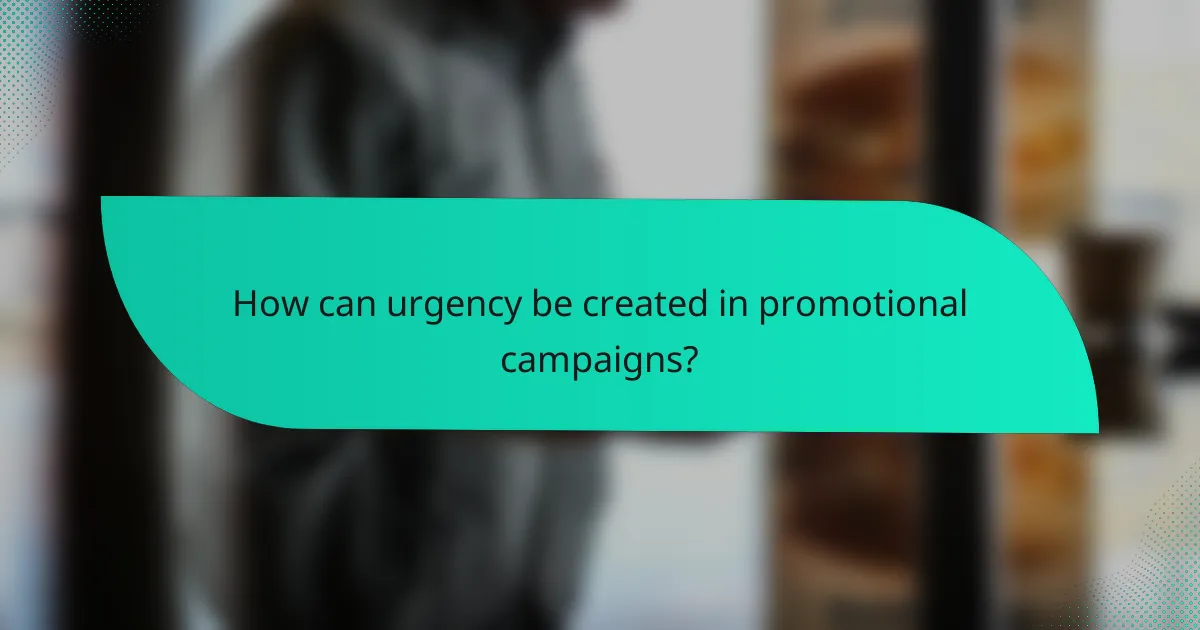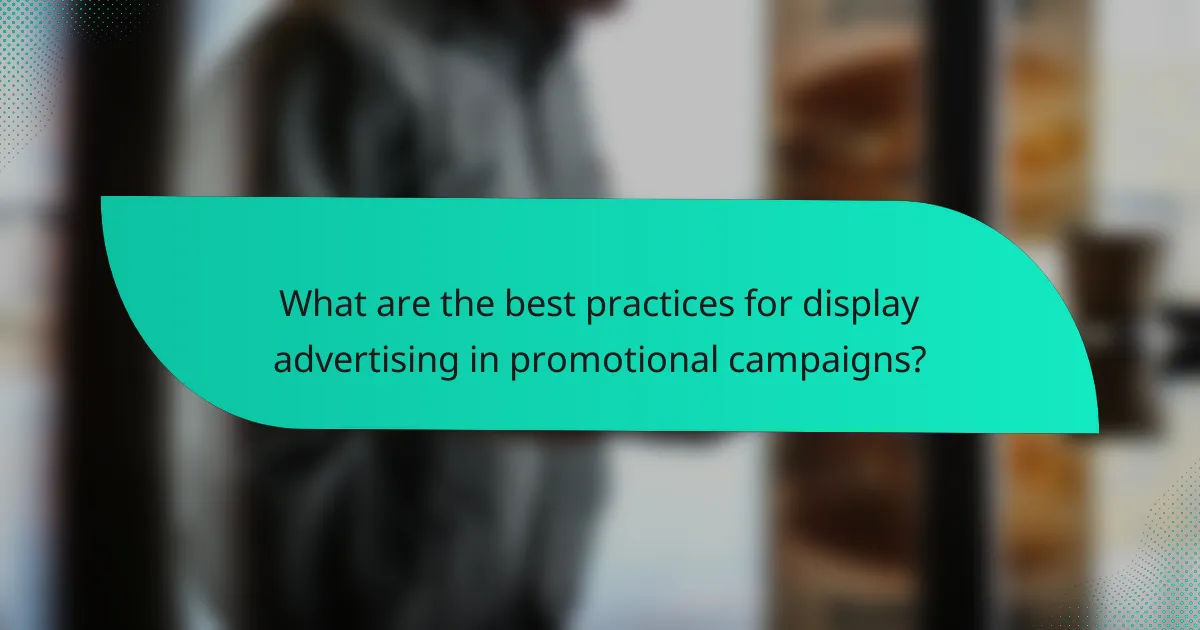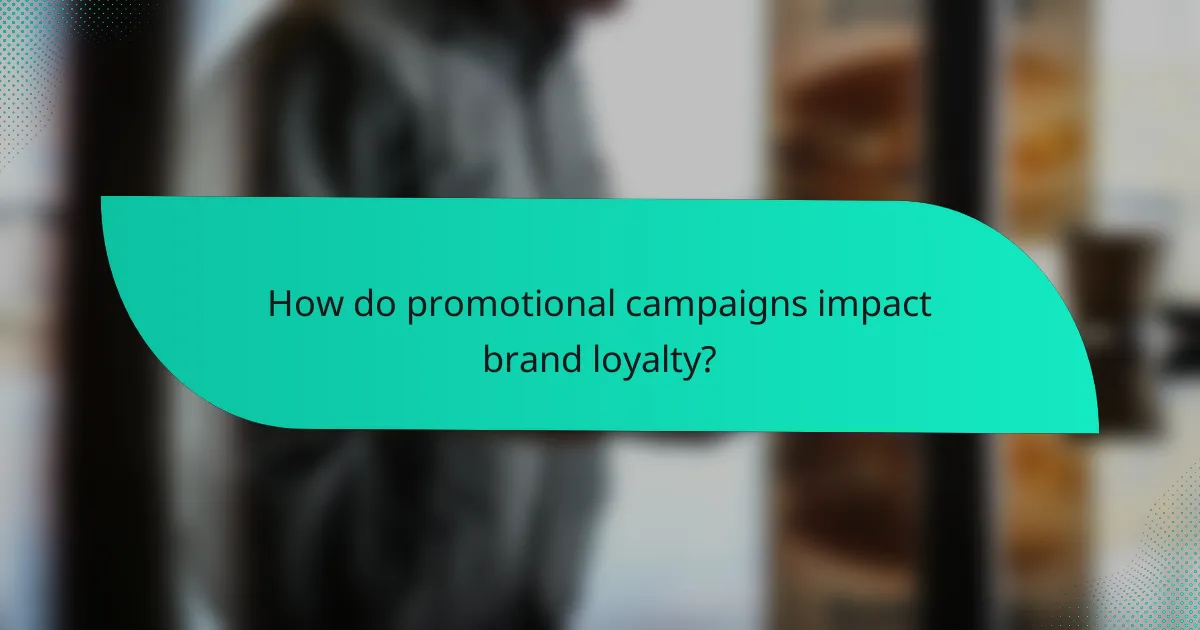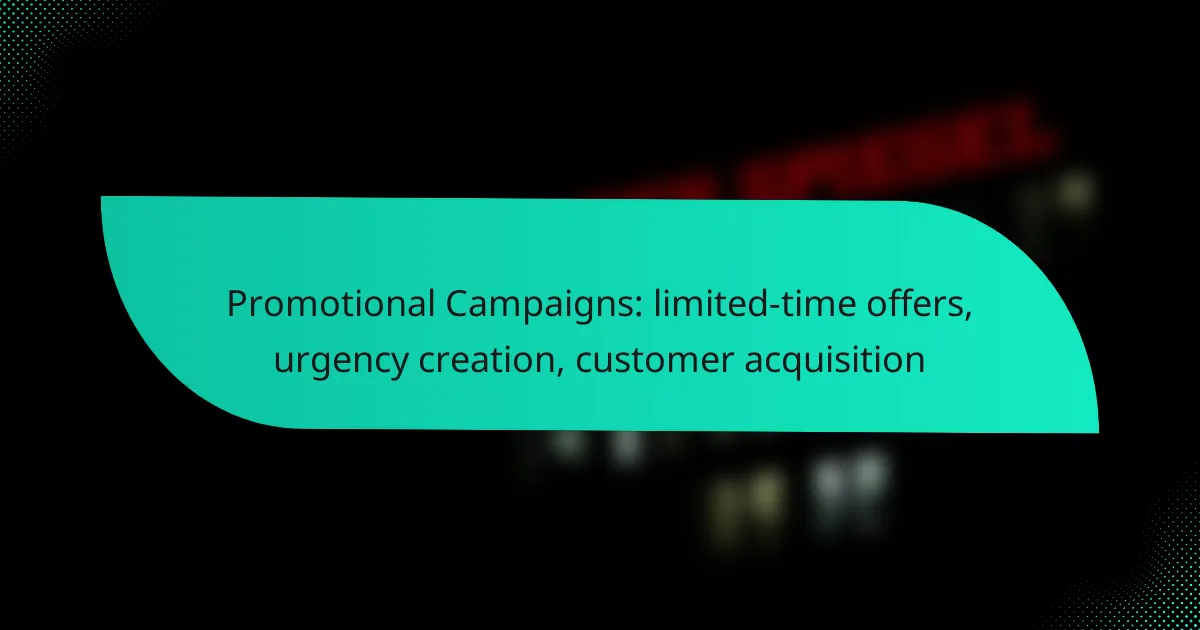Promotional campaigns play a crucial role in customer acquisition by leveraging limited-time offers that instill a sense of urgency. By enticing potential buyers with time-sensitive deals, businesses can significantly enhance engagement and drive sales. Implementing strategies such as countdown timers and limited stock notifications further encourages immediate action, making these campaigns highly effective in attracting new customers.

How do promotional campaigns drive customer acquisition in the UK?
Promotional campaigns in the UK effectively drive customer acquisition by creating a sense of urgency and offering limited-time deals that attract new customers. These strategies not only enhance brand visibility but also foster customer engagement, ultimately leading to increased sales.
Increased brand visibility
Promotional campaigns significantly boost brand visibility by leveraging time-sensitive offers that capture consumer attention. When potential customers see promotions advertised through various channels, such as social media, email, or online ads, they are more likely to remember and consider the brand.
Utilizing eye-catching graphics and clear messaging in promotions can further enhance visibility. Brands can also collaborate with influencers or partner with other businesses to reach a broader audience, amplifying their promotional efforts.
Enhanced customer engagement
Engagement rises when customers feel they are part of an exclusive opportunity. Limited-time offers can prompt customers to interact with the brand through social media, website visits, or email subscriptions. This interaction not only builds a relationship but also encourages sharing among peers, further expanding reach.
To maximize engagement, brands should create compelling content around their promotions, such as tutorials, reviews, or user-generated content. Engaging customers through polls or contests related to the promotion can also enhance their involvement and investment in the brand.
Boosted sales through urgency
Creating a sense of urgency is a key tactic in promotional campaigns that can lead to increased sales. When customers know that an offer is available for a limited time, they are more likely to make a purchase decision quickly, reducing the chance of second-guessing or delaying their choice.
Brands can implement countdown timers on their websites or in marketing emails to visually reinforce urgency. Additionally, using phrases like “only a few left” or “offer ends soon” can motivate customers to act swiftly. However, it’s essential to ensure that the urgency is genuine to maintain trust and avoid customer dissatisfaction.

What are effective limited-time offer strategies?
Effective limited-time offer strategies create a sense of urgency and encourage quick purchasing decisions. These strategies can significantly boost customer acquisition by enticing potential buyers with time-sensitive deals.
Flash sales
Flash sales are short-term promotions that typically last from a few hours to a couple of days. They create urgency by offering steep discounts on select products, prompting immediate action from customers. For example, an online retailer might announce a 50% off flash sale on a popular item for just 24 hours.
To maximize the impact of flash sales, consider promoting them through email alerts and social media channels. Highlight the limited availability and countdown timers to enhance urgency. However, ensure that the discounts are substantial enough to attract attention without compromising profit margins.
Seasonal promotions
Seasonal promotions leverage holidays or specific times of the year to drive sales. These offers can range from discounts during Black Friday to special deals for summer clearance events. Seasonal promotions not only align with consumer shopping habits but also create a festive atmosphere that encourages spending.
When planning seasonal promotions, consider the timing and relevance to your target audience. For example, offering back-to-school discounts in late summer can effectively attract families. Use visually appealing marketing materials that reflect the season to capture attention and enhance engagement.
Exclusive member discounts
Exclusive member discounts reward loyal customers and incentivize new sign-ups. These offers can include percentage discounts, early access to sales, or special pricing on new products. By creating a sense of belonging, businesses can enhance customer retention and encourage repeat purchases.
To implement exclusive member discounts effectively, promote them through targeted email campaigns and loyalty programs. Clearly communicate the benefits of membership, such as access to unique offers and personalized shopping experiences. Avoid overloading members with too many promotions, as this can dilute the perceived value of the discounts.

How can urgency be created in promotional campaigns?
Urgency in promotional campaigns can be effectively created through various strategies that encourage immediate action from customers. By implementing techniques such as countdown timers, limited stock notifications, and time-sensitive messaging, businesses can enhance customer acquisition and drive sales.
Countdown timers
Countdown timers are visual elements that display the remaining time for a promotional offer. They create a sense of urgency by reminding customers that the opportunity is fleeting, often leading to quicker purchasing decisions. For instance, a timer showing hours or minutes left on a sale can significantly boost conversion rates.
When using countdown timers, ensure they are prominently placed on your website or marketing materials. Consider using them for flash sales or special events, and be transparent about when the timer resets or when the offer ends to maintain trust with your audience.
Limited stock notifications
Limited stock notifications inform customers when a product is running low in inventory, prompting them to act quickly to secure their purchase. This tactic leverages the fear of missing out (FOMO), which can be a powerful motivator. For example, stating “Only 3 items left!” can create urgency and encourage immediate action.
To implement this strategy effectively, regularly update stock levels on your website and consider using phrases like “While supplies last” to reinforce the urgency. However, avoid misleading customers about stock levels, as this can damage your brand’s credibility.
Time-sensitive messaging
Time-sensitive messaging involves communicating that an offer is available for a limited period, which can drive customers to make faster decisions. Phrases like “Sale ends tonight!” or “Last chance for 20% off!” can compel customers to act before the opportunity disappears.
When crafting time-sensitive messages, be clear about the time frame and ensure that the offer is genuinely limited. Use multiple channels, such as emails, social media, and website banners, to reinforce the message and reach a broader audience. Consistency across platforms enhances the urgency and effectiveness of your campaign.

What are the best practices for display advertising in promotional campaigns?
Effective display advertising in promotional campaigns hinges on a few key practices that enhance visibility and engagement. By focusing on targeted audience segmentation, compelling ad copy, and high-quality visuals, businesses can significantly boost their customer acquisition efforts.
Targeted audience segmentation
Targeted audience segmentation involves dividing your potential customers into specific groups based on demographics, interests, and behaviors. This practice allows advertisers to tailor their messages and offers to resonate more deeply with each segment, increasing the likelihood of conversion.
Utilize data analytics tools to identify key characteristics of your audience. For example, if your campaign targets young professionals, consider focusing on platforms like LinkedIn or Instagram where this demographic is most active. Aim for segments that represent a significant portion of your target market to maximize impact.
Compelling ad copy
Compelling ad copy is crucial for capturing attention and driving action. Use clear, concise language that communicates the value of your limited-time offer and creates a sense of urgency. Phrases like “Act now” or “Limited availability” can motivate potential customers to engage immediately.
Incorporate strong calls to action (CTAs) that guide users on what to do next, such as “Shop Now” or “Sign Up Today.” Test different variations of your ad copy to see which resonates best with your audience, and be prepared to adjust based on performance metrics.
High-quality visuals
High-quality visuals play a vital role in attracting attention and conveying your brand message effectively. Use eye-catching images or graphics that align with your promotional theme and evoke the desired emotional response from your audience.
Ensure that your visuals are optimized for various devices, as many users will view ads on mobile. A/B testing different visual elements can help identify which images or designs yield the best engagement rates. Remember, a strong visual can often communicate more than words alone, so choose wisely.

What metrics should be tracked for promotional campaign success?
To gauge the success of promotional campaigns, key metrics such as conversion rates, click-through rates, and return on ad spend should be closely monitored. These indicators provide insights into customer engagement and the overall effectiveness of the campaign.
Conversion rates
Conversion rates measure the percentage of users who complete a desired action, such as making a purchase or signing up for a newsletter, after engaging with a promotional offer. A typical conversion rate for e-commerce can range from 1% to 5%, depending on the industry and the effectiveness of the campaign.
To improve conversion rates, ensure that your landing pages are optimized for user experience and that the promotional offer is clearly communicated. A/B testing different offers or layouts can help identify what resonates best with your audience.
Click-through rates
Click-through rates (CTR) indicate the percentage of users who click on a promotional link compared to the total number of users who viewed the ad or email. A good CTR typically falls between 2% and 5%, but this can vary based on the platform and audience.
To enhance CTR, focus on crafting compelling calls to action and visually appealing ads. Experimenting with different headlines and images can also lead to better engagement and higher click rates.
Return on ad spend
Return on ad spend (ROAS) measures the revenue generated for every dollar spent on advertising. A common benchmark for ROAS is a ratio of 4:1, meaning for every dollar spent, four dollars in revenue are generated. However, this can differ based on the business model and campaign goals.
To maximize ROAS, analyze which channels yield the highest returns and allocate your budget accordingly. Regularly reviewing campaign performance and adjusting strategies based on data can help improve overall profitability.

How do promotional campaigns impact brand loyalty?
Promotional campaigns can significantly enhance brand loyalty by creating a sense of urgency and offering customers compelling reasons to return. When customers perceive value in limited-time offers, they are more likely to engage with the brand repeatedly, fostering a stronger connection over time.
Increased repeat purchases
Promotional campaigns often lead to increased repeat purchases by incentivizing customers to buy more frequently. Limited-time discounts or exclusive offers can motivate consumers to act quickly, resulting in higher sales volumes during the promotion period. For instance, a brand might offer a 20% discount for a week, encouraging customers to make additional purchases they might have otherwise postponed.
Furthermore, these campaigns can help establish a habit of shopping with a brand. When customers experience positive outcomes from their purchases, such as satisfaction with the product or service, they are likely to return for future deals, reinforcing brand loyalty.
Customer retention strategies
Effective customer retention strategies often incorporate promotional campaigns to keep consumers engaged. Brands can use personalized offers based on previous purchases, which not only reward loyalty but also enhance the shopping experience. For example, sending a special discount to loyal customers on their birthdays can strengthen their emotional connection to the brand.
Additionally, creating a loyalty program that integrates promotional campaigns can further boost retention. Offering points for every purchase that can be redeemed for future discounts encourages customers to choose the brand over competitors. This approach not only retains existing customers but also attracts new ones who are drawn to the perceived value of loyalty incentives.
